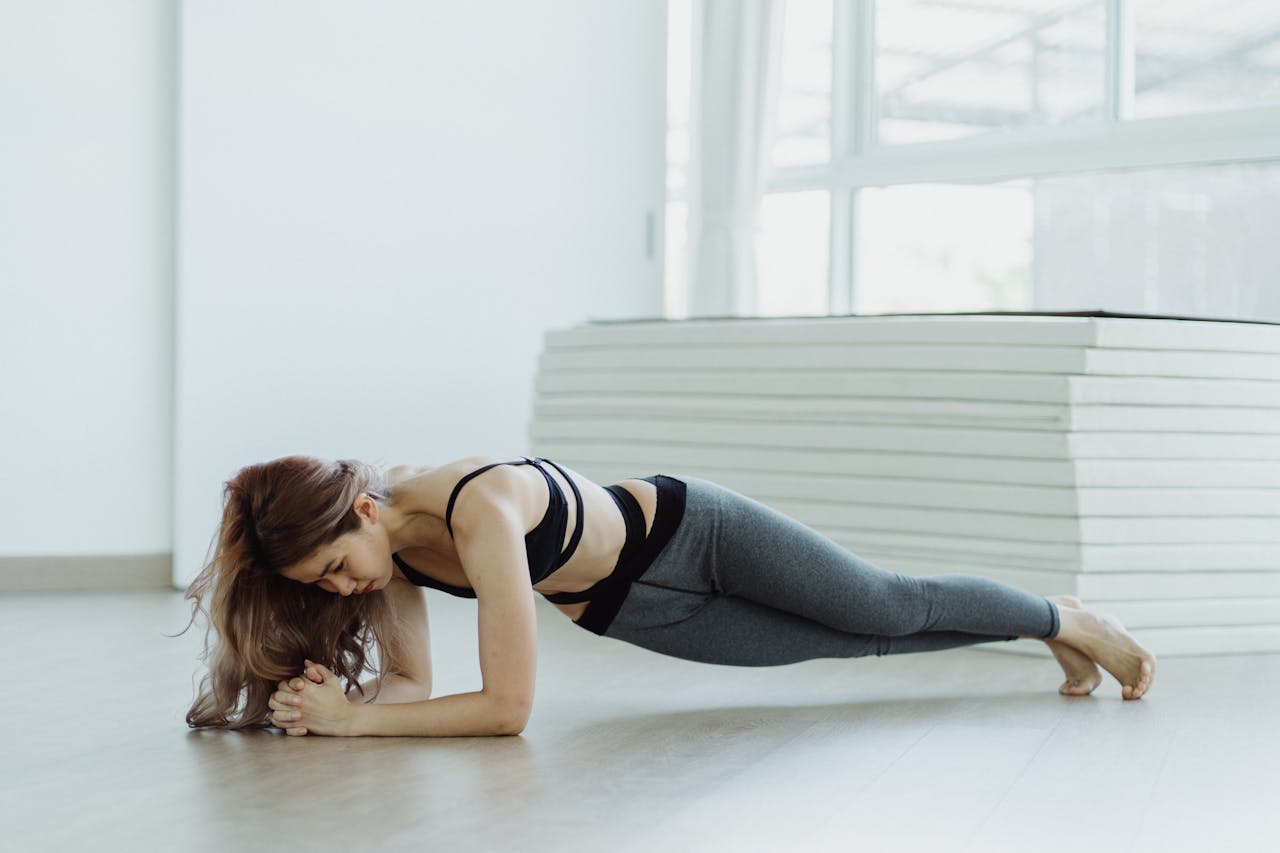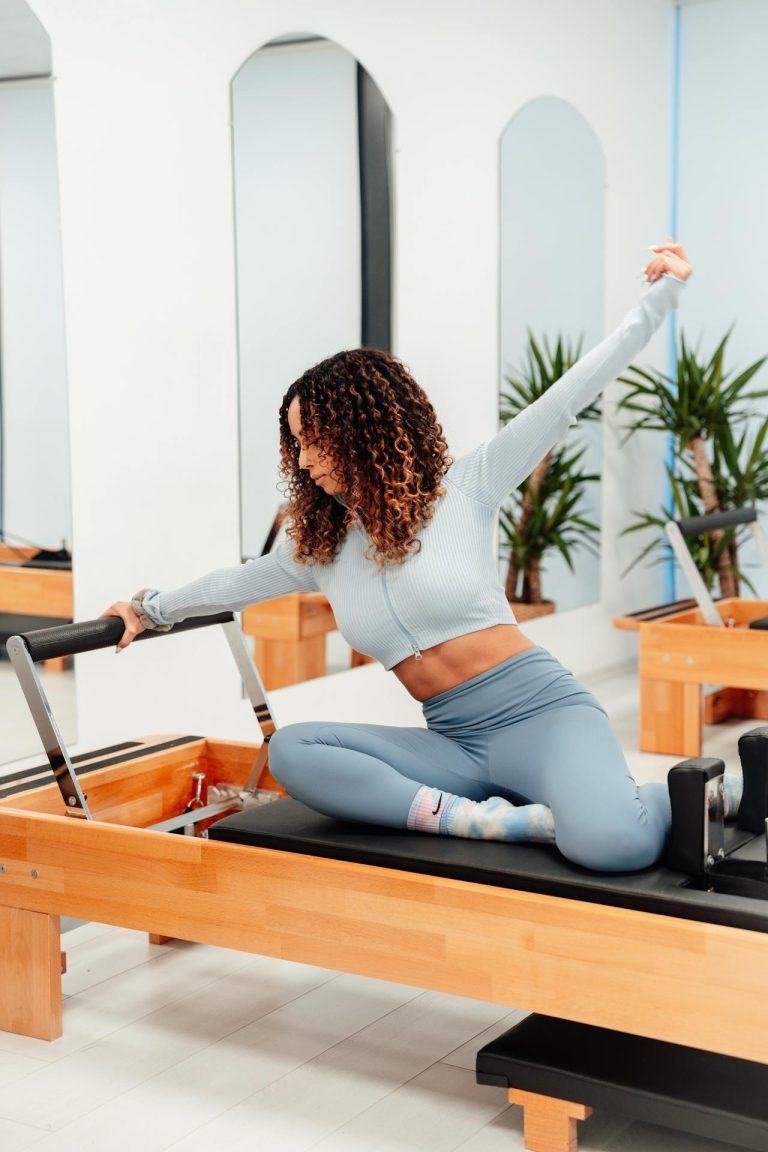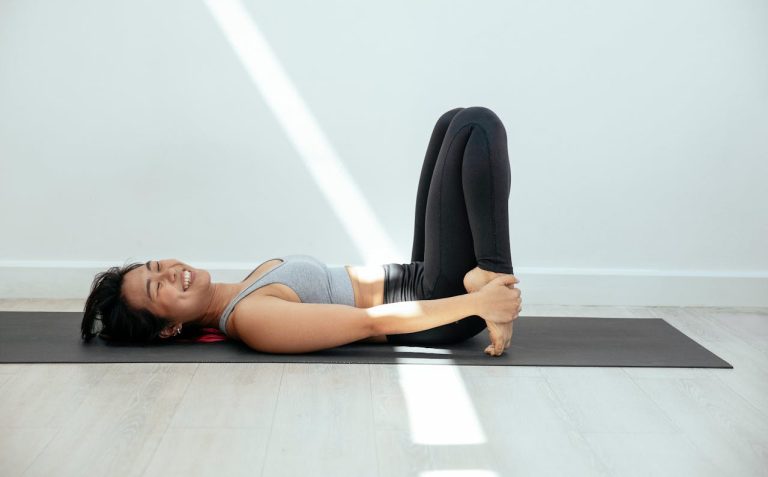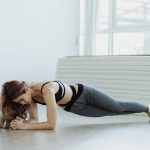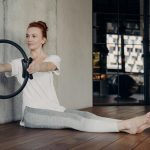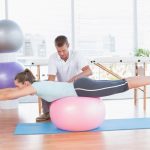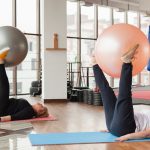Pilates and core strength go hand in hand. In fact, core engagement is one of the fundamental principles of Pilates, and every movement in the practice is designed to strengthen your body from the inside out.
But here’s the secret: a strong core isn’t just about flat abs. It’s about stability, posture, balance, and even injury prevention. Whether you’re new to Pilates or looking to level up your existing routine, adding targeted core exercises can help you move with greater control, reduce back pain, and boost your total-body performance.
In this article, you’ll discover 10 of the best Pilates core exercises for strength—each one selected for its effectiveness, accessibility, and ability to build a strong, functional center.
Let’s get to the list.
1. The Hundred
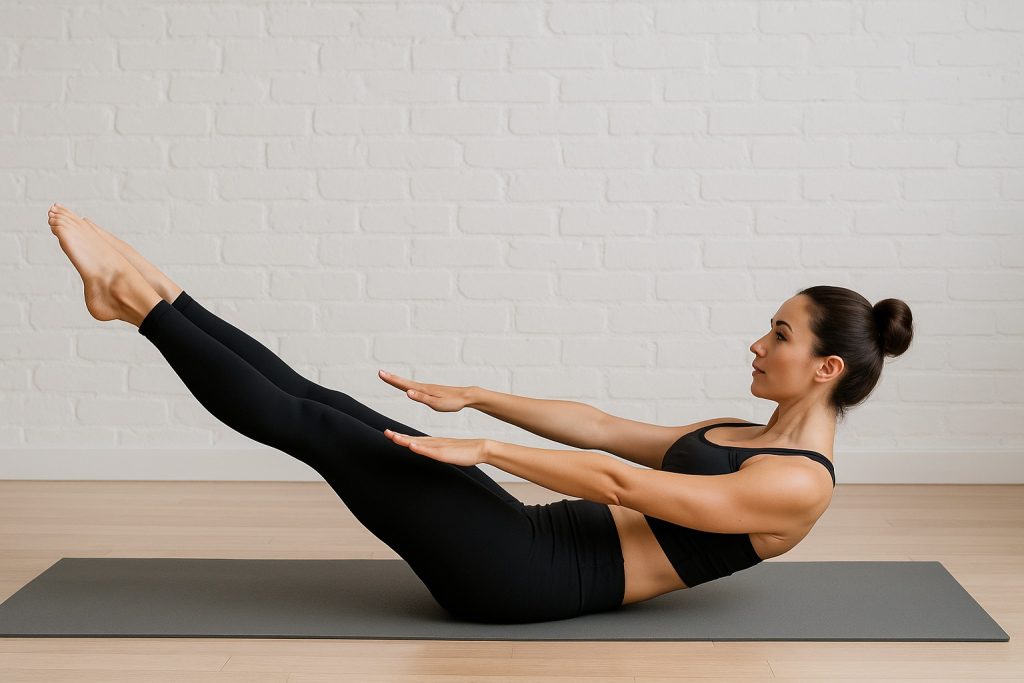
Why it works: This classic Pilates move is a warm-up and abdominal endurance builder in one. It activates the deep core muscles and increases circulation.
How to do it:
- Lie on your back with knees bent at 90 degrees or legs extended to a 45-degree angle.
- Lift your head, neck, and shoulders off the mat.
- Extend arms straight alongside your body, hovering above the mat.
- Pump your arms up and down vigorously while inhaling for 5 counts and exhaling for 5 counts.
- Repeat for 100 total pumps (10 full breath cycles).
Tip: Keep your lower back pressed gently into the mat for optimal engagement and support.
2. Single-Leg Stretch
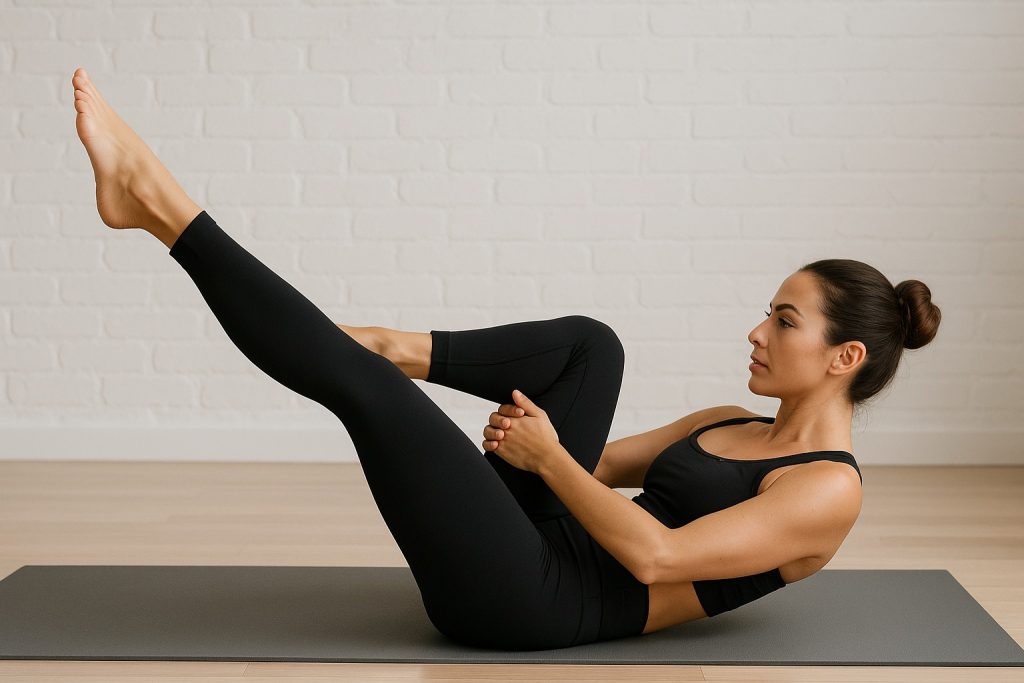
Why it works: This movement targets the lower abdominals while also challenging coordination and control.
How to do it:
- Start lying on your back with knees pulled into your chest.
- Lift your head and shoulders off the mat.
- Extend one leg straight while holding the opposite knee with both hands.
- Switch legs smoothly, alternating back and forth.
- Perform 8–10 reps on each side.
Tip: Move slowly and breathe steadily. This is not about speed, but precision.
3. Double-Leg Stretch
Why it works: Builds strength and control across the entire abdominal wall and improves breath coordination.
How to do it:
- Begin in the same position as the single-leg stretch.
- Inhale to extend both legs straight out and arms overhead.
- Exhale to circle your arms back around and hug your knees into your chest.
- Repeat for 8–10 controlled reps.
Tip: Avoid arching your back. If needed, keep the legs higher for more control.
4. Criss-Cross
Why it works: This is Pilates’ version of a bicycle crunch—and it’s incredibly effective for the obliques.
How to do it:
- Lie on your back with hands behind your head and legs in tabletop position.
- Lift your head and shoulders off the mat.
- Extend one leg while twisting your torso toward the bent knee.
- Switch sides, alternating in a controlled motion.
- Do 8–12 reps per side.
Tip: Lead the twist from your ribs, not just your elbows.
5. Roll-Up
Why it works: The roll-up strengthens the entire abdominal area and challenges spinal articulation.
How to do it:
- Lie flat with arms extended overhead and legs together.
- Inhale to lift your arms toward the ceiling and begin curling up.
- Exhale as you peel your spine off the mat, reaching toward your toes.
- Slowly roll back down, one vertebra at a time.
- Repeat for 6–10 reps.
Tip: Bend your knees slightly if needed to maintain control and avoid straining the back.
6. Teaser
Why it works: This advanced move builds balance, core strength, and total-body coordination.
How to do it:
- Lie on your back with legs extended and arms overhead.
- Simultaneously lift your arms, upper body, and legs to form a V-shape.
- Balance on your sit bones, hold briefly, then lower down with control.
- Perform 5–8 reps.
Tip: Modify by keeping knees bent or one leg on the ground if you’re still building strength.
7. Plank Leg Lift
Why it works: Combines the core activation of a plank with dynamic stability challenges.
How to do it:
- Begin in a forearm or straight-arm plank position.
- Lift one leg a few inches off the floor, hold for 2 seconds, then lower.
- Alternate legs for 10–12 total reps.
Tip: Keep your hips level and avoid sagging. Engage your glutes and abs throughout.
8. Swimming
Why it works: Strengthens the back body, especially the erector spinae, and promotes balanced core development.
How to do it:
- Lie on your stomach with arms and legs extended.
- Lift opposite arm and leg off the floor, alternating back and forth in a fluttering motion.
- Inhale for 5 counts, exhale for 5 counts.
- Continue for 30–60 seconds.
Tip: Keep movements small and controlled. This is about length and precision.
9. Side-Lying Leg Lifts
Why it works: Targets the obliques, hips, and lateral stabilizers that support a strong, balanced core.
How to do it:
- Lie on one side with legs extended and stacked.
- Lift your top leg to hip height, then lower.
- Repeat 10–15 times, then switch sides.
Tip: Avoid rocking your torso. Keep your upper body steady to engage your core effectively.
10. Pilates Saw
Why it works: Engages the deep core muscles while promoting spinal rotation and flexibility.
How to do it:
- Sit tall with legs extended in a V shape.
- Extend your arms out to the sides.
- Inhale, then exhale as you rotate your torso and reach your front hand toward the opposite foot.
- Return to center and repeat on the other side.
- Do 6–8 reps per side.
Tip: Keep your sit bones grounded and lengthen your spine throughout the movement.
Read Also: How Long Is a Typical Pilates Session?
How to Use These Pilates Core Exercises in Your Routine
You can perform these exercises as a complete core-focused Pilates routine or incorporate them into your current workout plan. Here are two sample structures:
Quick Core Routine (15 minutes):
- Hundred (1 min)
- Single-Leg Stretch (10 reps/side)
- Criss-Cross (10 reps/side)
- Roll-Up (8 reps)
- Plank Leg Lifts (10 reps/side)
- Teaser (5 reps)
Full Core Burn (30–40 minutes):
- Add all 10 exercises
- Perform each with control and rest as needed
- Repeat the full circuit twice
Consistency matters more than intensity. Practicing 3–4 times per week can lead to noticeable improvements in strength, control, and abdominal definition.
Read Also: How Long Does It Take to See Results When Working Out?
Final Thoughts: Core Strength Is Foundational, Not Optional
A strong core doesn’t just look good—it feels good. From supporting your spine to improving balance and reducing injury risk, these Pilates exercises build strength from the inside out.
Whether you’re a beginner or experienced, these 10 movements can be adapted to suit your level and goals. The key is to focus on form, breathe through the movements, and maintain consistency. Over time, you’ll not only see the difference—you’ll feel it in every step, twist, and reach you take.

